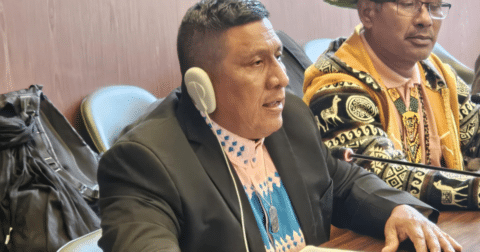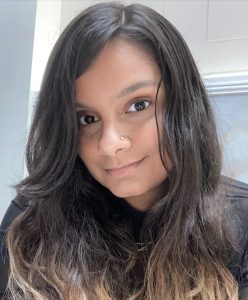Explainer
Agriculture Affects Deforestation Much More Than Most People Realize
Climate•7 min read
Feature
The government has increased its restrictions in the name of conservation without subjecting nearby aquaculture facilities to the same scrutiny.


Words by Grace Hussain
Panama is known for its natural beauty and Isla Escudo de Veraguas is no exception. The island located off the country’s coast has particularly rich biodiversity, including species found nowhere else in the world like the pygmy three-toed sloth and the golden-collared manakin. In October, the Panamanian government resolved to close the island temporarily. Government officials cited a range of human activities to explain the closure, including tourism and fishing. The move is the latest restriction placed on fishing access for the Ngöbe-Buglé, a nation of two Indigenous peoples in Panama who have fished and stewarded the surrounding waters for over 100 years. Meanwhile, seven miles south from these contested waters, an open-ocean fish farm called Open Blue Cobia is raising fish to export to the United States, China and European markets without objection.
For many decades, the Ngöbe-Buglé and the Panamania government have clashed over control of the land. Now the fight between the Indigenous community that regards itself as the stewards of the area and the Panamanian government has reached a tipping point, as the nation finds itself on the verge of being fully restricted from Isla Escudo de Veraguas, the last of its ancestral fishing grounds.
Ngöbe-Buglé fishers have long relied on traditional subsistence fishing methods instead of adopting more extractive and profitable practices. “We only dedicate ourselves to our ancestral way of fishing” by diving and using small traps instead of boats, Alfonso Simón Raylan, an Indigenous fishing leader, said in an interview with SERTV, Panama’s public broadcast television station.
“This island is associated with one of our gods that is related directly to our language that we speak, and so the language that we speak and the island are connected in this mythology,” Maximo Jimenez Palacio, President of the Regional Congress governing the Ngöbe-Buglé people, tells Sentient. The deep cultural significance of the island is a major reason why they’ve only used it and its surrounding waters for subsistence fishing, he says.
In 2009, a government resolution first incorporated the island into Panama’s National System of Protected Areas, a move that restricted the nation’s ability to fish from March to June each year, but allowed them to continue co-managing the island with the government. The government has now implemented a complete closure of the area for a one-year period.
Estefanía Narváez, media coordinator for the fishers, tells Sentient that government officials descended upon the fishers in September to confiscate their fishing gear — snorkels and flippers to help with swimming. Thanks to that move and the fishing restrictions that followed, Narváez says that the Ngöbe-Buglé are now struggling to feed their communities.
In response to Sentient’s request for comment, Panama’s Department of Environment pointed to development projects, resource exploitation and climate change as the driving factors behind the historic displacement of the Ngöbe-Buglé. They did not comment on the confiscation of fishing gear.
Meanwhile, a large-scale fish farm called Open Blue continues its operation about seven miles off the coast, untouched by the government’s expanding conservation efforts.
Open Blue and other open-ocean fish farms continue to proliferate and expand globally, often lauded as a sustainable alternative to meat. Yet open-ocean fish farms present their own environmental issues, including escaping fish and waste pollution.
The farm, which opened in 2009, produces 1200 tons of cobia fish annually in its 22 sea pens. Cobia are a carnivorous white fish often served in tacos. According to Open Blue’s sustainability commitment, the farm sits inside of a 2500 acre no-take zone, meaning that fishing is not allowed in the waters.
The company describes its pens as a “high energy environment” where “the currents can exceed 3 knots,” ostensibly to move waste out and away. But fish waste can travel “significant distances,” a 2009 study suggests, potentially wreaking havoc wherever it goes. Though there have been no algae blooms reported off of the island, fish waste contributes to algae blooms that have been shown to damage sea life.
Open Blue has a number of certifications, including the Global Seafood Alliance’s Best Aquaculture Practices. The company’s sustainability commitment also states that “independent monitoring confirms that there has been no traceable impact to the marine environment around their operations.” Sentient requested access to these reports but did not hear back from Open Blue.
Another impact from fish farms raising carnivorous species like cobia ties to the feed. Carnivorous farmed fish typically eat fish meal and fish oil, often sourced from the kind of small wild-caught fish that have long fed many coastal communities. As more of these fish are caught and ground into meal, communities lose a major source of food and fishers often say they have little choice but to emigrate to find new jobs.
One argument for farming fish that require smaller fish for feed is that the “input:output ratio,” which compares the weight of fish used for feed to the weight of fish that is produced, is lower for fish than meat. Yet more recent research has challenged that calculation.
Sentient reached out to Open Blue for comment on their environmental impact and their input:output ratio but did not receive a reply before publication.
Jimenez Palacio believes the government’s long-term plan for the island is “to designate it as a national park,” a move that would permanently limit the nation’s access to the fishing grounds. “What that requires is that the people that currently live there need to move out of the island and stop their activities.”
The island is currently being managed by the Bocas del Toro province of Panama, but the fishers want to see it transferred officially to their stewardship, as it was prior to the 2009 regulation.
“This territory belongs to us, the Indigenous people of Ngöbe-Buglé, who are Indigenous to Panama and we want the tenancy of our island,” Simón Raylan told SERTV, Panama’s public broadcast television station.
“Indigenous people are not a threat to biodiversity,” said fisher Simón Raylan in a September address before the United Nations. “We are its guardians. Our voices must be heard and our rights protected.”
“Ancestrally, the Ngöbe-Buglé peoples have always lived and fished and had their cultures in the coast,” Willy Jimenez, one of the regional Casiques (or chieftains), tells Sentient through a translator. “We are not against protected areas or the idea of protected areas,” he goes on to reiterate, “as long as we’re able to continue to provide for our lives from the source.”
“Indigenous people are not a threat to biodiversity,” said Simón Raylan in a September address before the United Nations. “We are its guardians. Our voices must be heard and our rights protected.”
“Ancestrally, the Ngöbe-Buglé peoples have always lived and fished and had their cultures in the coast,” Willy Jimenez, one of the regional Casiques (or chieftains), tells Sentient through a translator. “We are not against protected areas or the idea of protected areas,” he goes on to reiterate, “as long as we’re able to continue to provide for our lives from the source.”